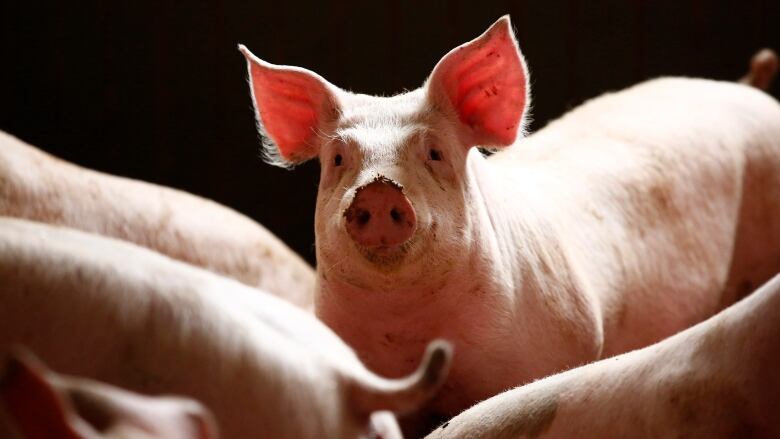Pig carcass study reveals how bodies decompose underwater
Dr. Gail Anderson, SFU professor, led research team in 'unprecedented opportunity'

Three pig carcasses dropped underwater are helping scientists understand how submerged human bodies decompose. Theanswerscould play a big role in forensic investigations.
Dr. Gail Anderson, a professor at Simon Fraser University's school of criminology, says she helps police determine how long ago someone died based on the insect activity around the corpse when one is found on land. But, she would frequently be asked about a body's decomposition in the water and there isn't much information on that, she saysin an interview that airs on CBC'sQuirks & Quarkson Saturday.
Anderson led a study using the Victoria Experimental Network Under the Sea (VENUS), which is a cabled underwater laboratory with sensors measuring most of the water's activity.
"This was just an unprecedented opportunity to be able to see what happens to a carcass underwater in real time to actually see it happen," says Anderson.
Oxygen levels impact decomposition
Her team dropped three pig carcasses into Saanich Inlet in British Columbia over three years. Pigshave some similarities to humans that make their carcasses useful in a study like this: both are omnivores with similar gut bacteria, have little hair and similar skin.
The first two times, Anderson said, the results were similar.Both times, marine animals consumed the carcasses in less than a month.
But, the third time something different happened.
"The carcass just sat and sat and sat for months and months and months," Anderson says.
Saanich Inlet, which is a deep water basin with a sill at the entrance, is a low oxygen area, she explains.
When the team dropped the third pig carcass, the oxygen level was very low. This prevented the big animals from getting to the carcass because they would avoid the low oxygen level area, she says, while the small ones couldn't break through the skin.When the oxygen levels increased, the carcass was consumed.
Their discovery that oxygen levels determine what animals can eat the carcass can help forensic investigations, she says. For example, divers attempting to recover human remains can be told whether they're looking for something as large as a corpse or something as small as a bone, based on the type of body of water they aresearching, she says.
Theresults were published last month inPLOS ONE. They've continued their research in the Strait of Georgia.












_(720p).jpg)


 OFFICIAL HD MUSIC VIDEO.jpg)
.jpg)



























































































